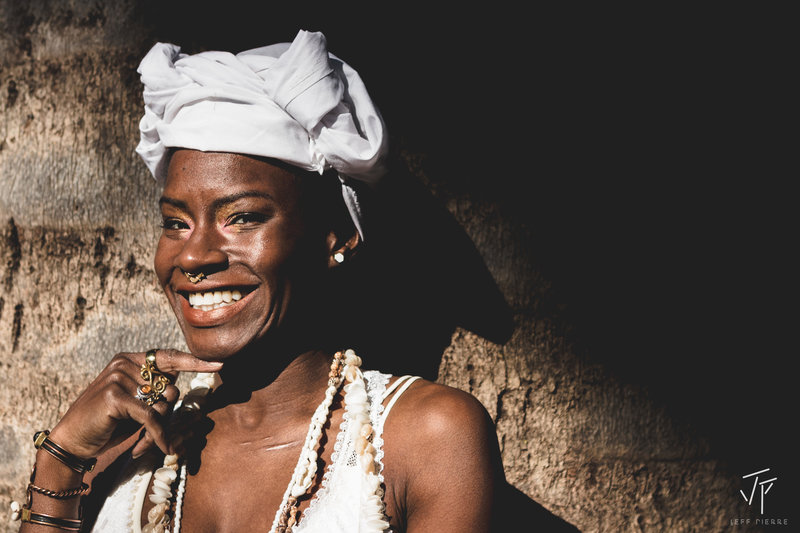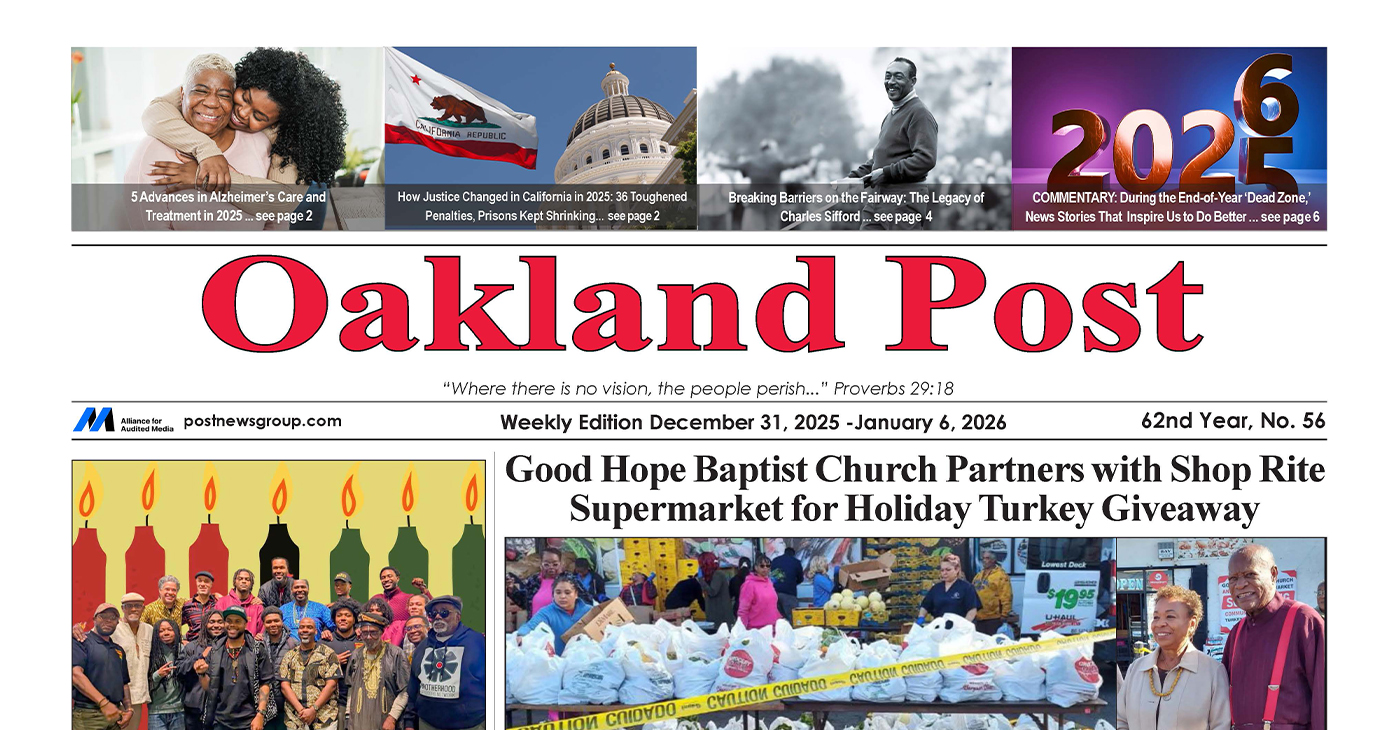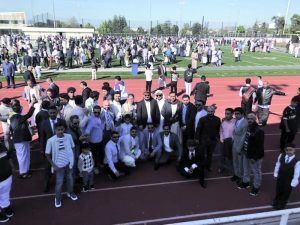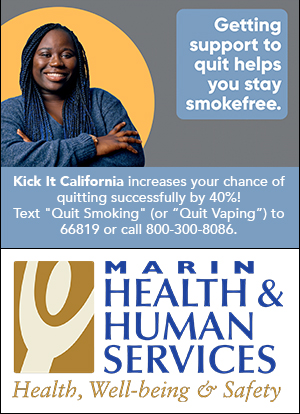Featured
Movement is the Medicine and Dance is the Healing – Critical Reframing for Black Mental Health

By Daktari Shari Renée Hicks, Psy.D.
It is seldom directly recognized that rhythmic harmonious movement is the natural state of being. Evidence of this fact is demonstrated at birth. While the outcome is filled with joy and fulfillment, “birthing” is a moment of stress, strain, difficulty and imbalance. To address this condition, it has become common practice to place the newly born infant directly onto the mother’s chest. In so doing, a rhythmic harmonious movement connects heart-to-heart and breath-to-breath. In fact, rhythmic balance is an indicator of wellbeing. The mother-child movement is the first divine dance.
In recognizing the significance of movement (dance) and sound (drumming), several members of the Association of Black Psychologists (ABPsi) have identified dance and drumming as a critical healing framework for African American wellness. Dance is a conceptual natural language with intrinsic and extrinsic meanings, a system of physical movements, and interrelated rules guiding performance in social, religious, and healing situations. Curative properties of African dance include cathartic release, connectivity, wholeness, communion, empathy, tranquility, problem-resolution, sublimation, bliss, altered states of consciousness, emotional expression, and enhanced sense of self/community. Dance may be utilized as a more effectual mode of communication than talk therapy.
The healing capacity of dance should in fact be un-coded for application in the therapeutic relationship. Dance does arouse and invoke multi-layered and multi-dimensional healing at the spiritual, psychological, emotional, behavioral, and physiological levels. As a member of the Bay Area Chapter of ABPsi, a lifetime dancer, founder and artistic director of the Daktari Dance Medicine Collective, and as a licensed clinical and forensic psychologist, I recognize the link between healing and dance. African dance has served as a form of medicine for Africans and their descendants for thousands of years and has created optimal conditions for healing by integrating the mind, body, and spirit. Through the medium of expressivity, African dance allows for transition, transcendence, transformation, and integration. Dance does and can play an essential role in reviving and treating symptoms of psychological distress.
The geometry of dance can actually translate movement into specific formulas that direct life’s energy to address specific tasks, i.e., love, war, healing, etc. For instance, Afro-Haitian dances and rhythms calling to Papa Legba activates the opening of the gate between the living and the mysteries found in the invisible realm. The BaKongo Nganga, Ya Fu-Kiau taught that as spirit beings, we vibrate and radiate (move) in seven directions as we traverse the four moments of the sun (cf. Fu-Kiau, 2003). The seven directions (upward, downward, rightward, leftward, backward, frontward, and inward) are coordinated and synchronized as a harmonious rhythmic impulse in dance. Each of the seven directions of the BaKongo has meaning and intention inscribed in dance movements.
In discussing the seven directions, Dr. Nobles (2017) has elaborated on Fu-Kiau’s teaching by noting that each of the seven directions or movements activate or has the intentionality to activate particular energies. For instance, “leftward” motions or direction activates the contact with or intention to continue to become and counter the negative (enemies). The “rightward” motions or direction activates the contact with or intention to belong as family, and love. The “upward” motions or direction activates the contact with or intention to go beyond and have access to the cosmic sea, dreams and creativity. The “downward” motions or direction activates the contact with or intention to be and see what energy is found in the earth (futu). The “forward” motions or direction activates the contact with or intention to behold and prepare our future for our children. The “backward” motions or direction activates the contact with or intention to begin by discovering our collectively accumulated wealth by uncovering our past and ancestral veneration as grounding for new beginnings. Finally, the “inward” motions or direction activates the contact with or intention of being and self-healing.
As I have in other venues, I will be sharing the connection of dance to mental health at the ABPsi’s 50th Annual International Convention (Go to http://www.abpsi.org/convention/index.html) June 27th-July 1st, 2018, at The Marriott Oakland City Center, in Oakland, California. This will be a further opportunity to share the healing power of movement (dance) and sound (drumming). Please join the ABPsi gathering of psychologists, university professors, healthcare professionals, educators, researchers, students, and everyday folks.
It is my opinion that movement is the medicine and dance is the healing. Ashe…Ashe…Ashe.
References
- Fu-Kiau, K.K.B. 2003. Self-Healing Power and Therapy: Old Teachings from Africa. New York: African
Tree Press. Nobles, W.W. 2017. Personal Communication/Teaching, July 20, 2012. N=718
Activism
Oakland Post: Week of December 31, 2025 – January 6, 2026
The printed Weekly Edition of the Oakland Post: Week of – December 31, 2025 – January 6, 2026

To enlarge your view of this issue, use the slider, magnifying glass icon or full page icon in the lower right corner of the browser window.
Activism
Big God Ministry Gives Away Toys in Marin City
Pastor Hall also gave a message of encouragement to the crowd, thanking Jesus for the “best year of their lives.” He asked each of the children what they wanted to be when they grow up.

By Godfrey Lee
Big God Ministries, pastored by David Hall, gave toys to the children in Marin City on Monday, Dec. 15, on the lawn near the corner of Drake Avenue and Donahue Street.
Pastor Hall also gave a message of encouragement to the crowd, thanking Jesus for the “best year of their lives.” He asked each of the children what they wanted to be when they grew up.
Around 75 parents and children were there to receive the presents, which consisted mainly of Gideon Bibles, Cat in the Hat pillows, Barbie dolls, Tonka trucks, and Lego building sets.
A half dozen volunteers from the Big God Ministry, including Donnie Roary, helped to set up the tables for the toy giveaway. The worship music was sung by Ruby Friedman, Keri Carpenter, and Jake Monaghan, who also played the accordion.
Big God Ministries meets on Sundays at 10 a.m. at the Mill Valley Community Center, 180 Camino Alto, Mill Valley, CA Their phone number is (415) 797-2567.
Activism
First 5 Alameda County Distributes Over $8 Million in First Wave of Critical Relief Funds for Historically Underpaid Caregivers
“Family, Friend, and Neighbor caregivers are lifelines for so many children and families in Alameda County,” said Kristin Spanos, CEO, First 5 Alameda County. “Yet, they often go unrecognized and undercompensated for their labor and ability to give individualized, culturally connected care. At First 5, we support the conditions that allow families to thrive, and getting this money into the hands of these caregivers and families at a time of heightened financial stress for parents is part of that commitment.”

Family, Friend, and Neighbor Caregivers Can Now Opt Into $4,000 Grants to Help Bolster Economic Stability and Strengthen Early Learning Experiences
By Post Staff
Today, First 5 Alameda County announced the distribution of $4,000 relief grants to more than 2,000 Family, Friend, and Neighbor (FFN) caregivers, totaling over $8 million in the first round of funding. Over the full course of the funding initiative, First 5 Alameda County anticipates supporting over 3,000 FFN caregivers, who collectively care for an estimated 5,200 children across Alameda County. These grants are only a portion of the estimated $190 million being invested into expanding our early childcare system through direct caregiver relief to upcoming facilities, shelter, and long-term sustainability investments for providers fromMeasure C in its first year. This investment builds on the early rollout of Measure C and reflects a comprehensive, system-wide strategy to strengthen Alameda County’s early childhood ecosystem so families can rely on sustainable, accessible care,
These important caregivers provide child care in Alameda County to their relatives, friends, and neighbors. While public benefits continue to decrease for families, and inflation and the cost of living continue to rise, these grants provide direct economic support for FFN caregivers, whose wages have historically been very low or nonexistent, and very few of whom receive benefits. As families continue to face growing financial pressures, especially during the winter and holiday season, these grants will help these caregivers with living expenses such as rent, utilities, supplies, and food.
“Family, Friend, and Neighbor caregivers are lifelines for so many children and families in Alameda County,” said Kristin Spanos, CEO, First 5 Alameda County. “Yet, they often go unrecognized and undercompensated for their labor and ability to give individualized, culturally connected care. At First 5, we support the conditions that allow families to thrive, and getting this money into the hands of these caregivers and families at a time of heightened financial stress for parents is part of that commitment.”
The funding for these relief grants comes from Measure C, a local voter-approved sales tax in Alameda County that invests in young children, their families, communities, providers, and caregivers. Within the first year of First 5’s 5-Year Plan for Measure C, in addition to the relief grants to informal FFN caregivers, other significant investments will benefit licensed child care providers. These investments include over $40 million in Early Care and Education (ECE) Emergency Grants, which have already flowed to nearly 800 center-based and family child care providers. As part of First 5’s 5-Year Plan, preparations are also underway to distribute facilities grants early next year for child care providers who need to make urgent repairs or improvements, and to launch the Emergency Revolving Fund in Spring 2026 to support licensed child care providers in Alameda County who are at risk of closure.
The FFN Relief Grants recognize and support the essential work that an estimated 3,000 FFN caregivers provide to 5,200 children in Alameda County. There is still an opportunity to receive funds for FFN caregivers who have not yet received them.
In partnership with First 5 Alameda County, Child Care Payment Agencies play a critical role in identifying eligible caregivers and leading coordinated outreach efforts to ensure FFN caregivers are informed of and able to access these relief funds.FFN caregivers are eligible for the grant if they receive a child care payment from an Alameda County Child Care Payment Agency, 4Cs of Alameda County, BANANAS, Hively, and Davis Street, and are currently caring for a child 12 years old or younger in Alameda County. Additionally, FFN caregivers who provided care for a child 12 years or younger at any time since April 1, 2025, but are no longer doing so, are also eligible for the funds. Eligible caregivers are being contacted by their Child Care Payment Agency on a rolling basis, beginning with those who provided care between April and July 2025.
“This money is coming to me at a critical time of heightened economic strain,” said Jill Morton, a caregiver in Oakland, California. “Since I am a non-licensed childcare provider, I didn’t think I was eligible for this financial support. I was relieved that this money can help pay my rent, purchase learning materials for the children as well as enhance childcare, buy groceries and take care of grandchildren.”
Eligible FFN caregivers who provided care at any time between April 1, 2025 and July 31, 2025, who haven’t yet opted into the process, are encouraged to check their mail and email for an eligibility letter. Those who have cared for a child after this period should expect to receive communications from their child care payment agency in the coming months. FFN caregivers with questions may also contact the agency they work with to receive child care payments, or the First 5 Alameda help desk, Monday through Friday, from 9 a.m. to 5:00 p.m. PST, at 510-227-6964. The help desk will be closed 12/25/25 – 1/1/26. Additional grant payments will be made on a rolling basis as opt-ins are received by the four child care payment agencies in Alameda County.
Beginning in the second year of Measure C implementation, FFN caregivers who care for a child from birth to age five and receive an Alameda County subsidized voucher will get an additional $500 per month. This amounts to an annual increase of about $6,000 per child receiving a subsidy. Together with more Measure C funding expected to flow back into the community as part of First 5’s 5-Year Plan, investments will continue to become available in the coming year for addressing the needs of childcare providers in Alameda County.
About First 5 Alameda County
First 5 Alameda County builds the local childhood systems and supports needed to ensure our county’s youngest children are safe, healthy, and ready to succeed in school and life.
Our Mission
In partnership with the community, we support a county-wide continuous prevention and early intervention system that promotes optimal health and development, narrows disparities, and improves the lives of children from birth to age five and their families.
Our Vision
Every child in Alameda County will have optimal health, development, and well-being to reach their greatest potential.
Learn more at www.first5alameda.org.
-

 Bay Area3 weeks ago
Bay Area3 weeks agoPost Salon to Discuss Proposal to Bring Costco to Oakland Community meeting to be held at City Hall, Thursday, Dec. 18
-

 Activism3 weeks ago
Activism3 weeks agoMayor Lee, City Leaders Announce $334 Million Bond Sale for Affordable Housing, Roads, Park Renovations, Libraries and Senior Centers
-

 Activism3 weeks ago
Activism3 weeks agoOakland Post: Week of December 10 – 16, 2025
-

 Activism3 weeks ago
Activism3 weeks agoOakland School Board Grapples with Potential $100 Million Shortfall Next Year
-

 Arts and Culture3 weeks ago
Arts and Culture3 weeks agoFayeth Gardens Holds 3rd Annual Kwanzaa Celebration at Hayward City Hall on Dec. 28
-

 Activism3 weeks ago
Activism3 weeks ago2025 in Review: Seven Questions for Black Women’s Think Tank Founder Kellie Todd Griffin
-

 Advice3 weeks ago
Advice3 weeks agoCOMMENTARY: If You Don’t Want Your ‘Black Card’ Revoked, Watch What You Bring to Holiday Dinners
-

 Activism3 weeks ago
Activism3 weeks agoAnn Lowe: The Quiet Genius of American Couture
























































